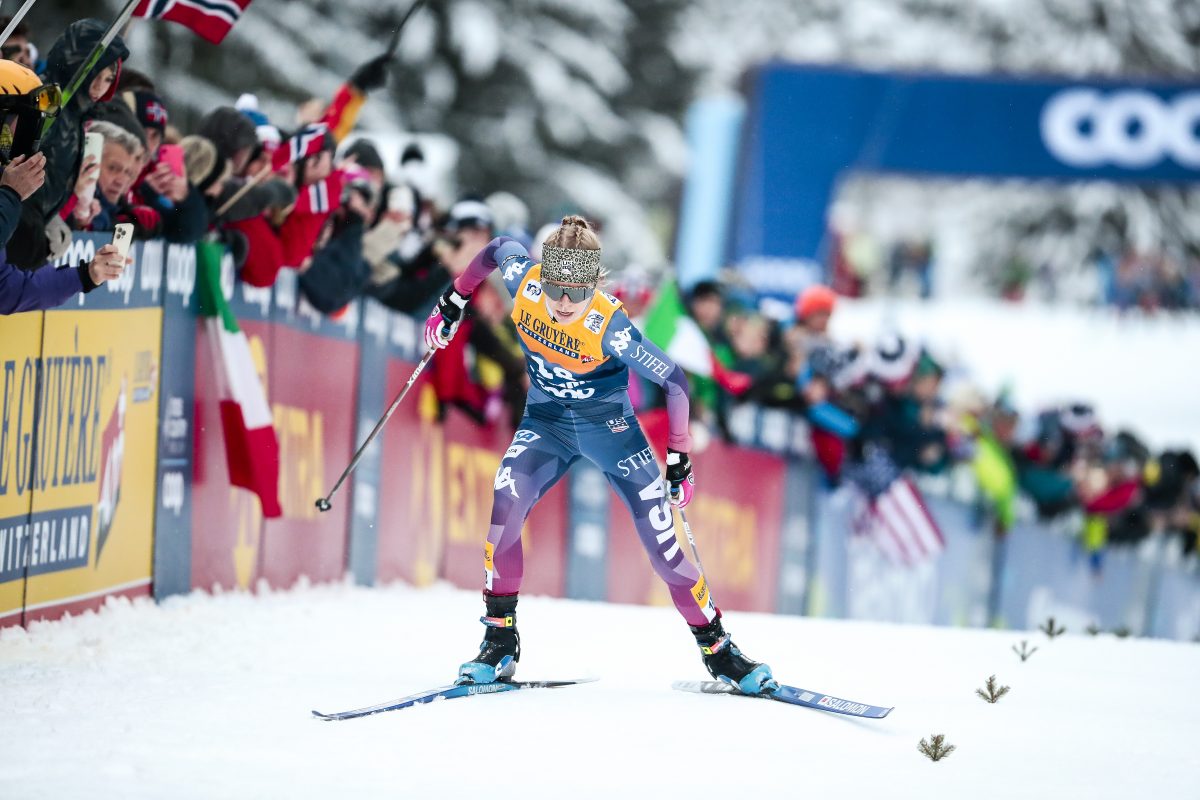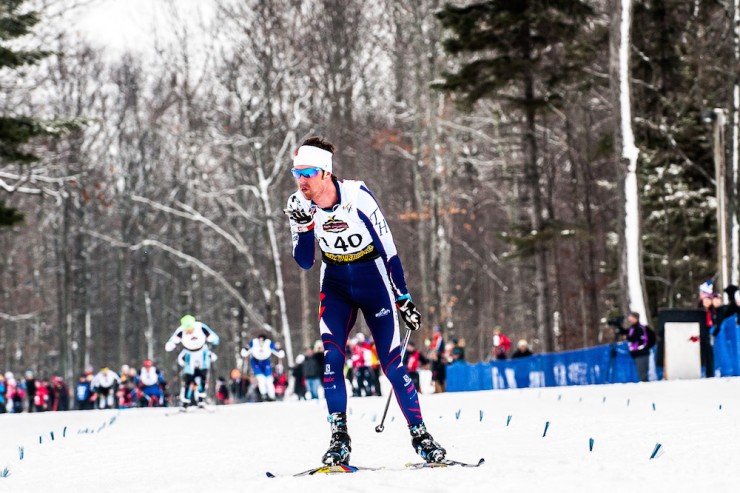
Below is an interview with the 2016 U.S. national champion in the 30-kilometer freestyle mass start, Tad Elliott, a 27-year-old Ski and Snowboard Club Vail skier and former U.S. Ski Team member. This interview originally appeared on SlowTwitch.com and has been adapted for FasterSkier. SlowTwitch is a comprehensive resource for a wide variety of endurance sports, in particular triathlon, and has recently launched a new feature designed to introduce triathletes to nordic skiing.
In the featured series, Olympic Gold Medalist Billy Demong explains the synergistic relationship between Nordic skiing, cycling and running, Kikkan Randall shows how to dress optimally for skiing, and Andy Newell, Brian Gregg, Matt Liebsch, Eric Packer and Mary Rose all offer an assortment of training and technical tips for skiers of all levels. Please visit SlowTwitch.com and check out all of these resources.
***
Fast Big Dog: Congratulations on winning another U.S. National Championship in the 30 k skate race. How many skiing titles is this for you?
Tad Elliott: This is my fourth national championship in nordic skiing. My first one was in 2010 in Fort Kent, Maine, when I won the 50 k skate race. I repeated again in 2011 in Rumford, Maine, in the 30 k skate race, then again in 2012 in Rumford, Maine, in the 15 k skate race. [Ed. note: the U.S . Cross Country Championships vary the format between skate and classic each year — there is a distance race every year, but the 50 k men’s races are now held at a separate U.S. Distance Nationals at the end of the season.]
FBD: How many National Championships have you won in mountain biking?
TE: I won the U23 national title two times in mountain biking, so I’ve been lucky enough to have the privilege of wearing the Stars and Stripes in a few different sports. It’s a tremendous honor and something I appreciate every time I put on the kit.
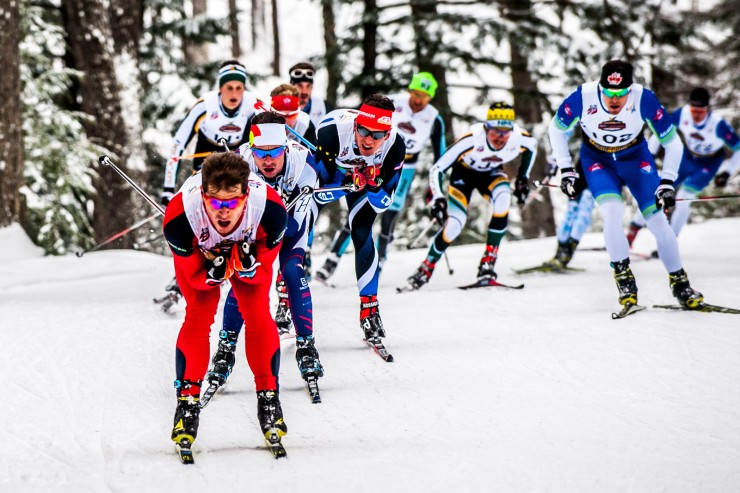
FBD: Tell me about this most recent win – how did it go down?
TE: The distance race in Houghton [Michigan] this year was a 30 k mass start. Race officials place skiers on the start grid based on FIS points, and since I’ve been sick for so long and basically out of racing, I didn’t have many points so I had to start 40th in the grid, which was bad. Mass starts in skiing are no different than those in bike races, they can be chaotic and more importantly, it is easy to miss a critical move if you are too far back, so I knew that if I was going to be at all competitive I was going to have to move up to the front quickly. This is where bike racing skills come in handy, too, as any bike racer worth his salt knows how to move up in traffic. This is easier said than done, though, and anyone who has done this knows that it burns a lot of energy, is stressful and can be dangerous so the whole time I was thinking, “move up, but be smart — don’t take any stupid risks.”
At 7 k down, two skiers attacked and got a bit of a gap, but Matt Liebsch and Brian Gregg went to the front and brought them back. Matt and Brian set a furious pace, so their efforts shattered the field and when they reeled the leaders back in at about 9 k in, we were down to a lead group of 11 guys. This group then stayed together until 3 k to go, when I attacked. I knew it was a “make or break” situation, so I gave it all I had and I was able stay away to the line.
FBD: What was going through your mind in that last 3 k?
TE: In the months leading up to the race, I could only dream of the podium. Hell, I didn’t know if I was going to be healthy enough to even start, but as you know, once the gun goes off, it really is anyone’s race. I had great skis, I felt good from the beginning and once things really got turned up, I realized I could actually win it.
Many people don’t realize just how tactical ski racing can be — it is very similar to bike racing — you have to gamble, take risks and make moves. Sometime these moves work and sometimes they don’t. You also need to be careful to not burn too many matches and when you do make a move, make it count, so once I got away, I knew I had made the right move at the right time, so I just told myself to stay relaxed, keep going and give it everything I had in the tank. And it worked.
“In the months leading up to the race, I could only dream of the podium. Hell, I didn’t know if I was going to be healthy enough to even start.” — Tad Elliott, 2016 U.S. nationals 30 k skate champion skate and longtime Ski & Snowboard Club Vail skier
FBD: We’ve talked in the past about how nordic ski training is good for cycling and vice versa; can you shed some more light on this concept given this big win?
TE: Having a strong cycling background for a race like this is key. Thanks to racing my bike a lot and at a very high level, I have quite a bit more experience in mass start races that many other skiers and this is a huge advantage. I’ve been in these types of racing situations a lot, so to have experience on when to go, when not to go, how to move up, when to move up, etc., was a tremendous asset. It’s not just the training that crosses over from skiing into cycling, it is also the tactics, techniques and mindset.
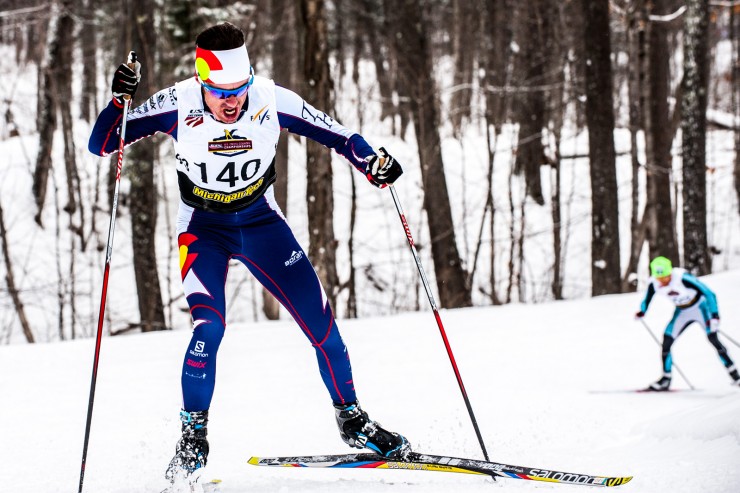
FBD: This is a huge win for any skier and the fact that you have several of these titles (and in different sports) is even more impressive, but I think probably the greatest part of this story is your remarkable comeback from illness. Can you walk us through everything you’ve been through in the past few years?
TE: It all started in 2014 when I was trying to make the Olympic team. I was training incredibly hard and caught Epstein-Barr virus. Unfortunately, it wasn’t diagnosed correctly right away, so even though I tried to do the right thing and get sound medical advice early in the process, the doctors missed the diagnosis initially and I was given the green light to return to training. This, combined with the high training load and the massive goal of making the Olympics all compounded themselves and I just dug myself deeper and deeper into a hole. Finally everything came crashing down and I got so sick that I couldn’t even leave the house. That was rock bottom.
That next winter, 2015, my doctors had finally figured out the problem and I did my best to ease back into training, but I was still so immunocompromised that even the slightest cold could trigger serious health events. I ended up going to the ER six different times with all sorts of maladies stemming from my weakened immune system: strep, mono, infections, you name it. It was so incredibly frustrating, as I felt like I was doing everything right: I was being smart and I was being careful, but even the smallest thing would not just set me back, but knock me off my ass so hard that I had to go to the doctor or even the ER. I then took even more time off, but I just couldn’t shake the illness. It was terrible.
FBD: When did you start to feel better?
TE: This past fall was when things finally started to turn around and I began to get healthy. After so many false starts and setbacks, I was incredibly careful getting back to training, so much so it was almost absurd. I would take a walk for 15 minutes and then take few days to recover. Then I’d walk for 30 minutes. That’s how much fitness I had lost. I gradually worked my way back into a more regular training program, but I had to be very patient and very smart. I did terribly in my first few races [relative to results earlier in my career], but I knew I was on my way back, which felt great. Just to be back out training again felt amazing.
“I would take a walk for 15 minutes and then take few days to recover. Then I’d walk for 30 minutes. That’s how much fitness I had lost.” — Elliott, 27, on how he resumed training
FBD: What was the most significant factor in your recovery?
TE: I think it was my stint at FBDR HQ for my most recent training camp that really made the difference [laughing].
In all seriousness, there were two huge factors in my recovery; patience and friendship. One of the things that I’ve learned in this process is how to more effectively manage stress. Stress effects your life in so many ways, so I’ve been carefully monitoring both my training load and my stress load. What is probably the most key though is HOW I’ve done this: patience. If I had tried to go charging back into training, there’s no way in hell I would have won in Houghton. No way. I won that race because I was patient and smart.
The second factor that I mentioned above was equally important: the friendship of those around me. Being a professional athlete is very difficult at times and it can be a cut-throat, competitive business. I am incredibly fortunate, though, in that I have a core group of friends and sponsors who stuck by me when the going got tough. I didn’t get ANY results for a few years, yet Ski Club of Vail, Oakley, Salomon, Swix, and Caldwell Sport were there for me every step of the way. Every person in every one of these organizations treated me with the same level of support, respect and friendship that they did when I was winning, so to have all of that remain in place during that incredibly tough period in my life means the world to me. I don’t know if I will ever be able to repay all of these people, but I know I never could have done this without each and every one of them. I am so thankful that I was given the opportunity to work with such an amazing group of people.
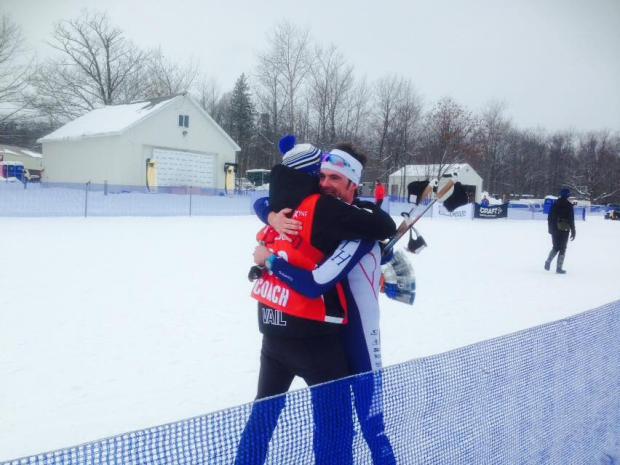
FBD: At the elite level in any sport, the margins between winning and middle of the pack are often razor thin, so knowing going in to the race that you still might not be at 100 percent, how did you prepare for such big event?
TE: Well, you are exactly right — the margins are very thin and the only reason I came out on top in Houghton is I had a lot of help. To be perfectly honest, I’m still not as fit as some of the other top skiers and the only reason I was able to win was my support team. My twin brother Evan waxed my skis for me and he is one of the best techs in the business. One of my coaches, Eric Pepper, was with me the entire time, also helping pick skis, waxing, setting up meals, lodging, and all of the other stuff that can prove to be a big distraction. Evan and Pep made everything so easy for me in Houghton that all I had to do was focus on skiing. In the end, I think that made the difference. I never could have won without those guys.
“I don’t know if I will ever be able to repay all of these people, but I know I never could have done this without each and every one of them.”
FBD: It sounds as though you have learned a lot in this process. What are some of the tell-tale signs of this type of illness/over-training that you recommend athletes look out for in their own training?
TE: The single, most important thing any athlete can do is have a good coach. I am incredibly fortunate to work with some of the best in business and I never could have done this without them. You need someone to help you monitor your training and recovery; it’s too hard to do it yourself as you are just too close and your objectivity goes right out the window. Things that you’d never advise a teammate to do in a million years can make all the sense in the world to you when you’re extremely focused on a goal, so you need the objective voice of a coach to help keep you on the right path.
Next is don’t be afraid to rest. And if you feel sick, rest even more. I completely restructured my training program to build in more rest: I now train for three days, take one easy day, train for three days, then take one day entirely off. This builds fitness, strength and most importantly has a built-in a circuit breaker with the mandatory rest days. It is much harder to over-train with this protocol. I follow this plan no matter what: even if I don’t think i need the rest, I now always take it.
The last thing that I did that made a huge difference is I started using the FirstBeat monitoring system. It works on heart rate variability and is a very sophisticated system to help monitor training load and recovery. I highly recommend it.
FBD: What was the hardest part of being sick for so long, the physical side or the mental side?
TE: Not being able to do the things that I love was the worst part. I really like biking and skiing and not being able to do these activities was very, very hard. I love being active: not just racing, but just being out there training is incredibly enjoyable for me, so not being able to do anything outside was very difficult.
FBD: What kept you going through all of this?
TE: The belief that others had in me is what really did it. Having people you trust and respect believe in you gives you so much confidence, it’s really what keep me from losing my mind. I said it earlier — I am incredibly fortunate to have an amazing support structure. I have so many great friends, family and sponsors that never gave up on me that even at the lowest points I never lost hope.
I also have a lot of pride. Knowing you should have made an Olympic team that you didn’t is a powerful motivator: there was just no way I was going to go out like that.
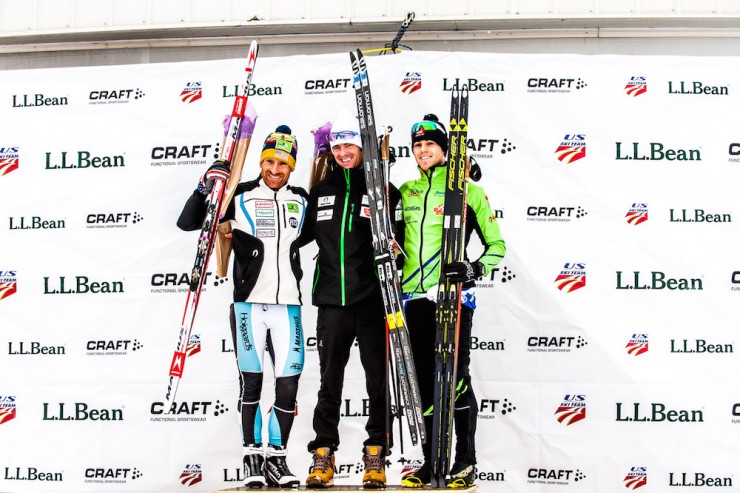
FBD: Did you ever question if you were ever going to make it back to the top?
TE: All of the time. Literally every day I would wonder if I could ever make it back. Fortunately my friends and family had more belief in me than I did, which is saying a lot, as I am quite cocky. My return is much more a testament to them than it is to me.
FBD: When did you know that you were back?
TE: At the finish line in Houghton. Well, I had in inkling with 3 k to go, and I had some great workouts at a training camp earlier in the year in New Hampshire and then again at FBDR camp, so I knew that things were coming back together, but if you honestly want to know when I was sure, then the answer is the finish line.
FBD: You and Matt Liebsch are the only two Americans to win the American Birkebeiner in the past 7 years, so the obvious question after this big win is will you be racing the Birkie this year and if so, how do you like your chances?
TE: It’s hard to say at this point if I’m going to do the Birkie. It’s a great race and I’d love to go back if I think I can be competitive, but as I noted earlier, I’m trying very hard to be smart about this recovery. While I feel like I’m finally getting back to form, I know I am not yet 100 percent and I’m still very concerned about coming back too fast. Like triathlon, skiing is a very demanding sport, so right now I’m just thinking about what I can do to stay healthy. I’m not looking too far down the line at this point; I’m just taking it day by day. If I’m healthy and rested enough to do the Birkie this year, great, if not, there’s always next year.
FBD: What advice do you have for those in the process of working through their own recovery right now?
TE: I think every situation is different and I can only tell you what worked for me, but my advice is to be patient. Every athlete is driven; that’s what gets us out there every day. The danger in this, though, is that it is easy for you to become your own worst enemy. Athletes are usually so eager to return to training and we think we have to be training to get results, but the truth is you are always going to be faster and be a hell of a lot happier if you wait to resume training until you are back to 100 percent. And even then, go back slowly. There’s always going to be another race and another year — trust me.
Another very important point that often gets lost in training is the concept of balance. There’s a lot of life to be lived outside of sport. It’s great to be focused on your racing goals, but never forget that this is supposed to be fun. Never lose sight of the friends, family and others that are helping you along the way and always remember that just because someone isn’t out there on the start line that doesn’t mean that they don’t matter as a person. There’s a lot more to life than racing and sometimes it takes something like this to make you understand that.

